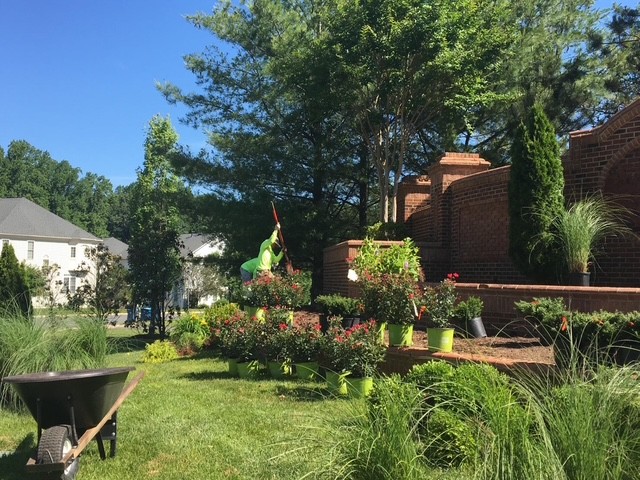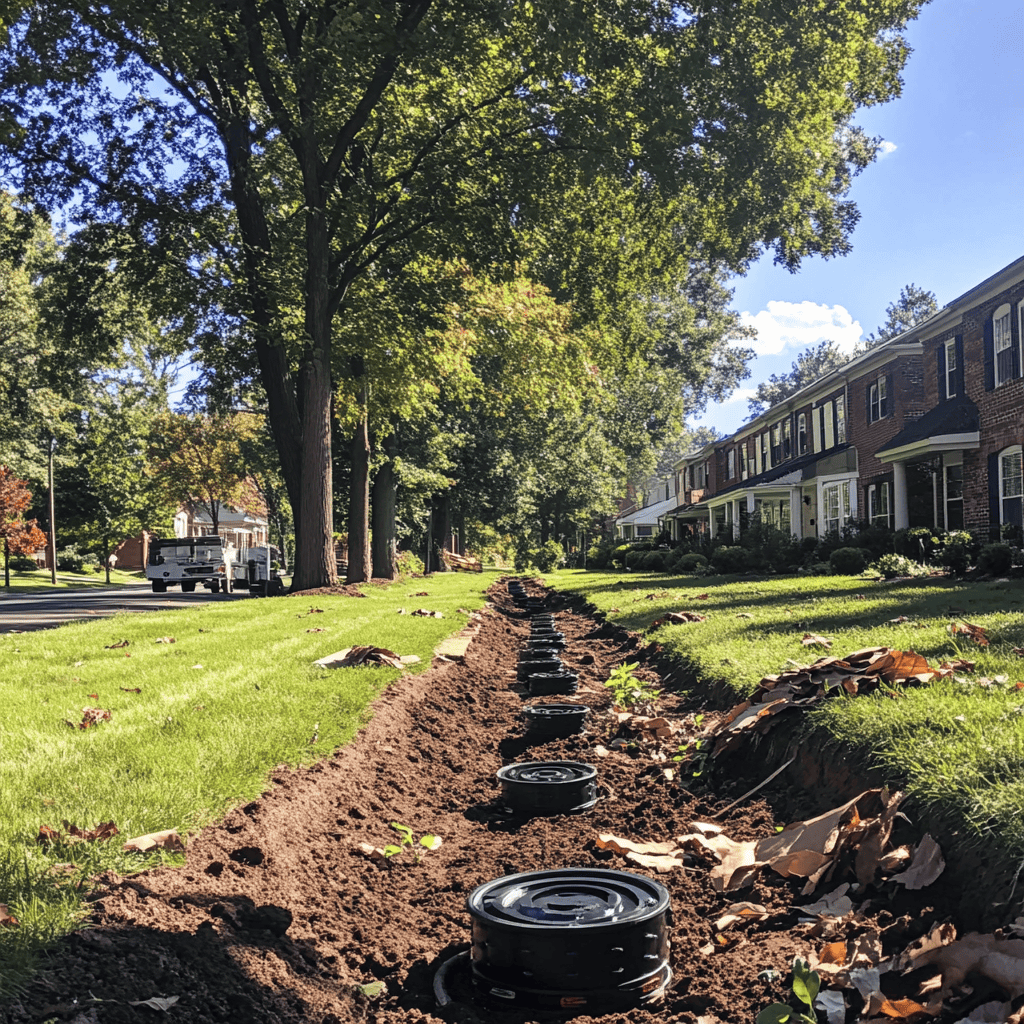WC Landscape brings over 40 years of combined experience to every tree installation project in Centreville, VA. Our professional arborists understand that proper tree installation goes far beyond simply digging a hole and placing a tree. We provide complete tree installation services that include site analysis, species selection, soil preparation, proper planting techniques, and establishment care to give your new trees the best possible start for decades of healthy growth.
Located in Northern Virginia's transitional climate zone, Centreville presents unique challenges and opportunities for tree installation. Our team specializes in selecting and installing trees that thrive in our local conditions, including clay soils, variable moisture levels, and temperature fluctuations. Whether you're looking to add shade trees, ornamental specimens, fruit trees, or evergreens for screening, we match the right tree species to your specific site conditions and landscape goals.
Our tree installation process begins with a thorough site evaluation and continues through establishment monitoring, providing you with healthy, properly placed trees that will enhance your property value and provide environmental benefits for generations. We source premium nursery stock and employ industry-best installation practices that promote rapid root establishment and long-term tree health.



Successful tree installation starts with matching the right tree species to your specific site conditions and landscape objectives. Our certified arborists conduct detailed site evaluations to identify the best locations and species for your Centreville property.
Our systematic installation approach promotes healthy root development and rapid establishment while preventing common installation mistakes that can compromise tree health.
Different tree installation projects require customized approaches based on specific challenges and objectives.
Installing mature trees requires specialized equipment and techniques to handle the size and weight while minimizing transplant shock.
Proper timing of tree installation significantly impacts establishment success and long-term tree health.
Virginia Run's established neighborhoods and mature landscapes require careful tree selection and installation practices that complement existing vegetation while meeting community standards.
Centre Ridge's rolling terrain and varied microclimates provide opportunities for diverse tree installations while presenting slope and drainage challenges.
Sully Station's newer development provides opportunities for landscape establishment while requiring consideration of HOA guidelines and young soil conditions.
Proper root system handling during installation determines long-term tree health and establishment success.
Centreville's clay soils require specific preparation techniques for successful tree establishment.
Proper equipment and techniques prevent installation damage while promoting successful establishment.
Our 40+ years of combined experience in Northern Virginia provides a deep understanding of Centreville's unique growing challenges, including clay soils, variable precipitation, and transitional climate conditions that affect tree establishment and long-term success.
WC Landscape sources premium nursery stock from reputable growers and maintains strict quality standards throughout the installation process.
Tree installation success depends on proper care during the establishment period. WC Landscape provides comprehensive support services to protect your tree investment.
Fall (September-November) provides the best conditions for tree installation in Centreville, with cooling temperatures that reduce transplant stress while soil remains warm enough for active root growth. This timing allows trees to establish strong root systems during fall and winter, preparing them for vigorous spring growth and better drought tolerance during their first summer.
Most trees require 1-3 years to become fully established, with the root system needing one year of establishment for every inch of trunk diameter. During this period, trees require regular watering, monitoring, and care to develop the extensive root system necessary for long-term health and survival in Centreville's climate conditions.
Trees that thrive in Centreville's clay soils include Red Oak, Sugar Maple, Bald Cypress, River Birch, and Eastern Red Cedar. These species are naturally adapted to heavier soils and can tolerate the drainage challenges that clay presents, while our installation techniques improve soil conditions to support healthy root development.
Tree spacing depends on the mature size of the species, but generally, shade trees should be planted 20-40 feet apart, ornamental trees 15-25 feet apart, and evergreen trees 10-20 feet apart. Proper spacing prevents overcrowding, reduces competition for nutrients and water, and allows each tree to develop its natural form without interference from neighboring trees.
Most tree installations on private property don't require permits, but many Centreville neighborhoods have HOA guidelines regarding tree placement, species selection, and size. We help navigate these requirements and recommend checking with your community association before installation to avoid potential conflicts or required modifications.
Newly installed trees typically need 10-15 gallons of water per week during the growing season, applied slowly and deeply to encourage deep root growth. Watering frequency depends on soil type, weather conditions, and tree size, with clay soils requiring less frequent but thorough watering to prevent both drought stress and waterlogged conditions.
Trees with 2-3 inch trunk diameters typically provide the best balance of immediate impact and establishment success. Smaller trees establish faster and often outgrow larger specimens within a few years, while trees larger than 4 inches require intensive care and have higher installation costs with greater establishment risk.
Trees should be planted at the same depth they grew in the nursery, with the root flare (where trunk meets roots) visible at soil level. Planting too deep is one of the most common installation mistakes and can lead to trunk rot, girdling roots, and eventual tree death, particularly problematic in Centreville's clay soils that retain moisture.
Post-installation maintenance includes regular watering during establishment, mulch replenishment, annual pruning for structure development, fertilization based on soil testing, and pest monitoring. Professional maintenance during the first three years protects your investment and promotes health, long-term growth, a nd development.
Trees can be installed near foundations with proper species selection and placement. Small ornamental trees can be planted 10-15 feet from foundations, while large shade trees should be placed 20-30 feet away to prevent foundation damage from expanding root systems and to avoid conflicts with utilities and structures.
WC Landscape provides a one-year warranty on professionally installed trees, covering tree replacement if the tree fails to establish due to installation issues or plant defects. The warranty requires following our care instructions and covers plant material and installation labor, though it excludes damage from weather extremes, improper care, or mechanical damage.
Signs of tree stress include wilting leaves during normal weather, premature leaf drop, yellowing foliage, lack of new growth, and bark cracking or peeling. Early recognition of stress symptoms allows for corrective action, including irrigation adjustment, pest treatment, or nutritional supplementation to save the tree and promote recovery.